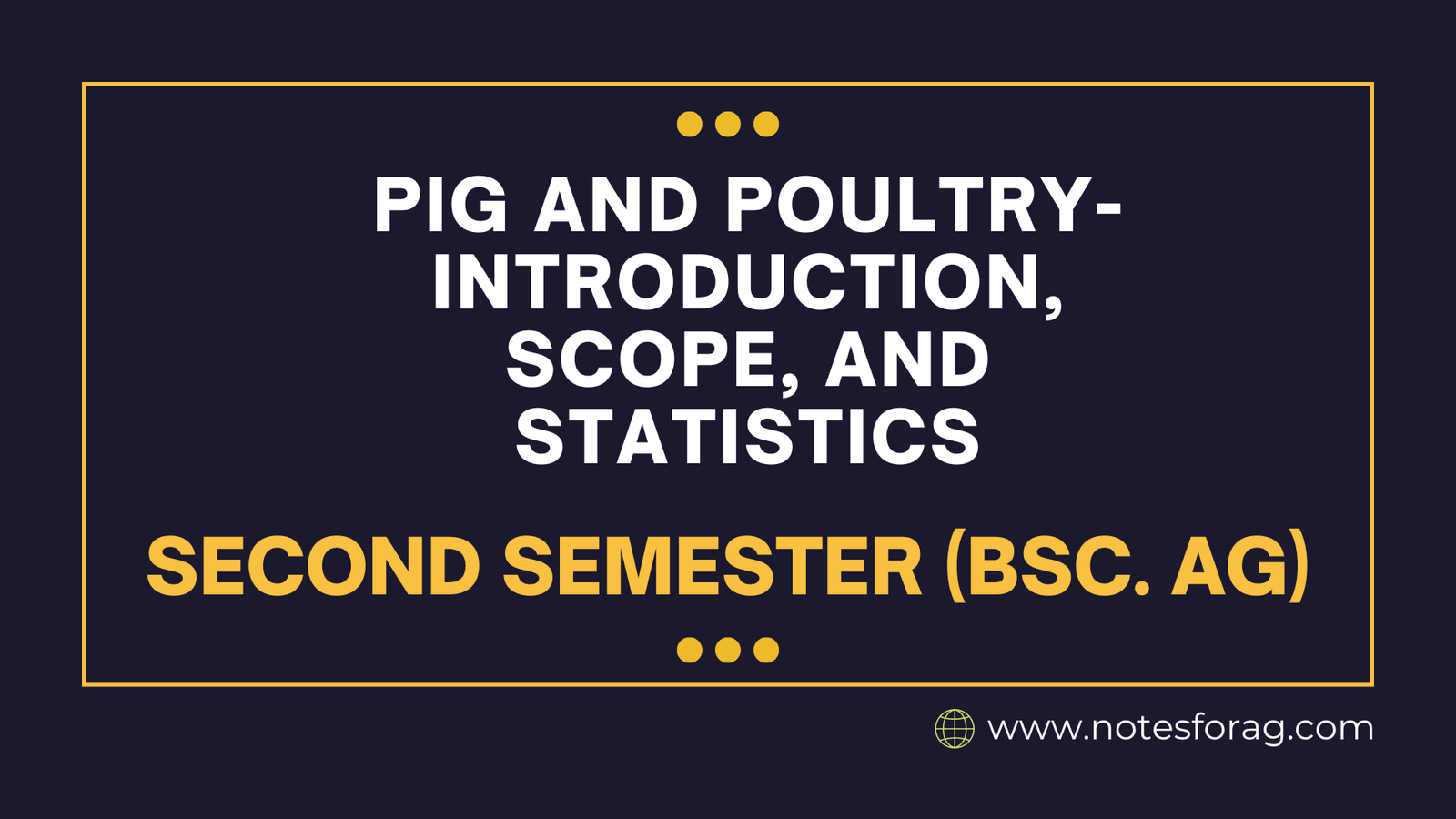The production of pig and poultry is an important part of the world’s agriculture since it produces meat and eggs, two crucial forms of protein. These sectors sustain the livelihoods of millions of people and make major contributions to global economic growth and food security. Pig and poultry farming includes effective production techniques, nutrition, health care, and breeding. 2020 saw a global production of pig meat of about 109 million metric tons, compared to approximately 137 million metric tons of chicken meat. Both sectors are predicted to keep growing due to rising demand brought on by population expansion and rising incomes, underscoring the significance of effective and sustainable farming methods.
Table of Contents
Introduction to Pig and Poultry Farming

Poultry and pig farming are essential elements of the agricultural industry, contributing significantly to global food supply. These agricultural methods entail producing pigs and different kinds of fowl, mostly chickens, for meat, eggs, and breeding stock, among other uses. It is impossible to exaggerate how important pig and poultry farming is to the world’s food chain, as they give millions of people their critical supplies of protein.
Swine farming, commonly referred to as pig farming, is the practice of breeding and rearing pigs mainly for the production of pork. Pigs are prized for the variety of pork products they produce, their quick development rates, and their high feed conversion efficiency. Pigs are raised for their byproducts, such as leather and lard, which have several industrial uses, in addition to their meat.
Conversely, raising domesticated birds like chickens, turkeys, ducks, and geese is referred to as poultry farming. The most widely farmed fowl is chicken, with layers raised for their eggs and broilers raised for their meat. Because poultry have a high feed conversion ratio and a short production cycle, which enable prompt stock replenishment and a steady supply of meat and eggs, poultry farming is widely recognized for its efficiency.
Scope of Pig and Poultry Farming
The cultivation of pigs and poultry is a prominent sector of the worldwide agricultural economy, making a substantial contribution to both local and global economies. There are many different sizes of these farming operations, from major commercial ventures to tiny, family-run farms. Due to this diversity, production capacity and techniques can be adjusted to accommodate varying market demands and resource availability.
Pig Farming
- Meat production: Pigs are primarily farmed for pork, a key source of animal protein worldwide.
- By-products: Leather is utilized in a variety of sectors, as are bristles in brushes.
- Breeding: Selective breeding boosts growth, meat quality, and illness resistance.
- Environmental Impact: Managing waste and emissions presents a huge problem.
Poultry Farming
- Meat production: Poultry meat is a key source of protein and is consumed worldwide.
- Egg production: Eggs are a staple food with significant nutritional value.
- By-products: Feathers are employed in a variety of businesses, while dung serves as fertilizer.
- Health & Nutrition: Poultry products are essential in human diets because they provide vital nutrients.
Statistics
Pig farming
- Global pork production: In 2023, worldwide pork output was estimated to be 114 million metric tons.
- Leading producers: China is the world’s greatest pork producer, followed by the EU, the US, and Brazil.
- Consumption: Pork is the most commonly consumed meat in the world, especially in East Asia and Europe.
- Economic Impact: Pig farming makes a significant contribution to many countries’ agricultural economies.
Poultry farming
- Global Poultry Meat Production: In 2023, worldwide poultry meat output was estimated to be around 137 million metric tons.
- Egg production: In 2023, the world produced approximately 82 million metric tons of eggs.
- Leading producers: The United States, China, Brazil, and the European Union are the leading poultry producers.
- Consumption: Poultry meat is the world’s second most consumed meat, following chicken.
- Economic Impact: Poultry farming is a significant economic activity that generates employment and contributes to food security.
Pig and poultry farming are important parts of world agriculture, generating key food products and contributing significantly to the economy. They provide several potential for growth and development, but they also face issues such as sustainability, animal welfare, and environmental effect. In summary, the pig and poultry farming business has considerable challenges, yet there are several potential for expansion and improvement. By adopting technological advancements, promoting animal welfare, and adhering to sustainable practices, the sector can manage the difficulties of modern farming and ensure a resilient and prosperous future.
Frequently Asked Question(FAQ)
What are the main breeds of pigs used in commercial farming?
The main breeds include Yorkshire, Landrace, Duroc, and Hampshire. These breeds are well-known for their rapid growth, high-quality meat, and reproductive efficiency.
What are the environmental impacts of pig and poultry farming?
Both methods of farming can have serious environmental consequences, such as greenhouse gas emissions, water pollution from waste runoff, and land use. Sustainable practices and technology are being developed to help alleviate these effects.
Related Articles

